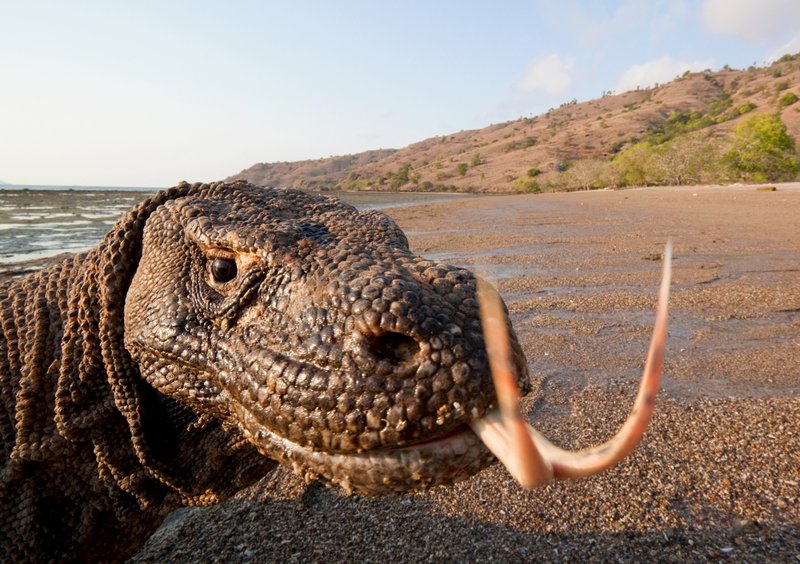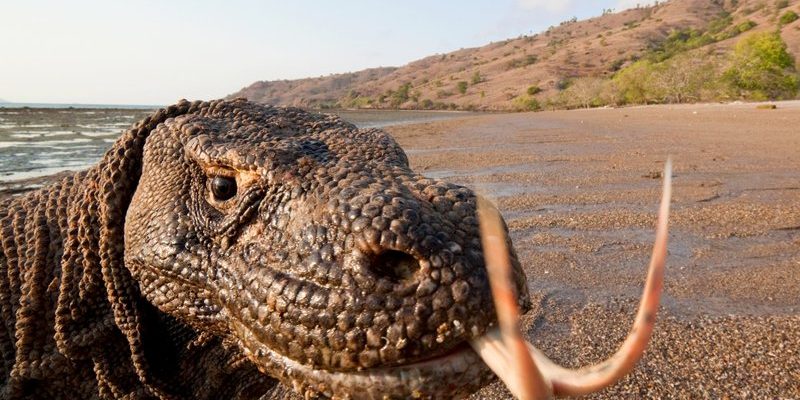
Imagine wandering through a dense, tropical island where the sun shines bright, and the air is thick with the scent of humid greenery. It’s not a fantasy world; it’s the home of the Komodo dragon. These remarkable reptiles are endemic to a handful of islands in Indonesia, giving them a specific, isolated habitat that only a select few visitors get to witness up close. Share a cup of coffee with me, and let’s explore where these dragons live, how they thrive, and why they’re so special.
Indonesia: The Home of Komodo Dragons
Komodo dragons are primarily found in Indonesia, specifically on a few islands in the Lesser Sunda group. The most notable of these islands are Komodo, Rinca, Flores, and Gili Motang. Each island has its unique landscape, which contributes to the dragon’s survival and lifestyle.
On Komodo Island, you’ll find rugged hills, savanna-like grasslands, and secluded beaches, all bathed in a golden sun. This island was declared a national park in 1980, aimed at protecting the Komodo dragon’s habitat and ensuring that these ancient creatures continue to thrive. On Rinca Island, the terrain is similar, providing ample opportunities for these reptiles to hunt and roam freely.
You might be wondering how these islands can support such large lizards. Well, the islands are rich in biodiversity, with plenty of prey like deer, wild boar, and various birds. This abundance of food helps sustain the large population of Komodo dragons that call these islands home.
Komodo National Park: A Sanctuary for Dragons
Komodo National Park is the crown jewel of Komodo dragon habitats. Established to protect these extraordinary creatures, the park covers an area of 1,733 square kilometers, including the islands I mentioned before. It’s not just a home for Komodo dragons; it’s a thriving ecosystem teeming with wildlife.
Visiting the park feels like stepping into a real-life nature documentary. As you hike through the park, you might see dragons lethargically basking in the sun, their scaly skin shimmering in the light. There are strict rules to follow in the park to ensure both visitor safety and the dragons’ well-being. For instance, it’s essential to be accompanied by a park ranger while exploring the area. These rangers are knowledgeable and can provide fascinating insights into the behavior and habitat of the dragons.
In addition to dragons, the park is a haven for marine life, offering rich dive sites and coral reefs that attract divers from all around the globe. This combination of land and sea makes Komodo National Park a UNESCO World Heritage site and a must-visit destination for nature lovers.
Unique Islands and Their Role in Conservation
Aside from the well-known Komodo and Rinca Islands, other locations also play a crucial role in the conservation of the Komodo dragon. Flores Island, for example, is larger and less developed than its neighbors. While it’s mainly known for its stunning landscapes and rich culture, it’s also home to a smaller population of these fascinating lizards.
Interestingly, the presence of Komodo dragons on Flores helps scientists study their adaptations and behavior. Knowing where Komodo dragons are found allows researchers to understand their ecological needs and how they interact with their environment. This knowledge is vital for crafting effective conservation strategies.
Gili Motang is another island where these dragons roam, but it’s less frequented by tourists. This means the dragons may be less accustomed to human presence, which can make sightings more thrilling. Besides, Gili Motang is part of ongoing conservation efforts, helping to ensure the long-term survival of the species across its habitat range.
Why Are These Dragons Important to Their Ecosystem?
Komodo dragons aren’t just impressive due to their size; they’re also essential to the health of their ecosystem. As top predators, they play a crucial role in controlling prey populations, which keeps the ecosystem balanced. By preying on weak or sick animals, they promote stronger gene pools among other species, ensuring healthier populations.
Their hunting methods are as fascinating as their size. These reptiles have a unique way of catching prey. They often use a combination of stealth and speed to ambush animals, delivering a powerful bite. This bite is not just strong; it’s also laced with bacteria that can lead to infection. Once a Komodo dragon bites its prey, it may take days for the animal to succumb to its injuries, allowing the dragon to track it down later.
It’s incredible how these ancient creatures have adapted over millions of years, and their role as apex predators is a big part of their story. Understanding this helps us appreciate the delicate balance of their environment and why we must protect it.
Challenges Facing Komodo Dragons
Despite their robustness, Komodo dragons face several challenges. Habitat loss, caused by human activities like deforestation and land development, poses a significant threat. As their habitat shrinks, so does their ability to find food and mates.
Climate change is another major concern. Rising sea levels threaten the low-lying islands where the dragons reside, and shifting weather patterns can affect their prey’s availability. With fewer resources, the dragons face increased competition for food.
Conservation efforts are more critical than ever to help protect these extraordinary creatures. Local and international organizations are working together to raise awareness and develop strategies to conserve their habitats. Education is key; the more we know about where Komodo dragons are found and their ecological importance, the better equipped we are to help them survive.
How You Can Help Komodo Dragons
If you’re passionate about helping Komodo dragons, there are plenty of ways to get involved. Here are a few ideas:
- Visit responsibly: If you plan to visit Komodo National Park, ensure you’re following all guidelines set by the park. This helps protect their natural habitat and ensures the safety of both visitors and dragons.
- Support conservation organizations: Many dedicated groups work tirelessly to protect Komodo dragons and their habitats. Consider donating or volunteering with these organizations.
- Spread awareness: Share what you learn about Komodo dragons with friends and family. The more people who understand the importance of these animals, the better chance they have for survival.
Helping the Komodo dragon isn’t just about saving one species; it’s about preserving a unique part of our world’s biodiversity.
Final Thoughts on the Komodo Dragon’s Habitat
Understanding where Komodo dragons are found opens up a window into their extraordinary world. From the rocky landscapes of Indonesia’s islands to their crucial role in the ecosystem, these creatures deserve our respect and protection. By supporting conservation efforts, we can help ensure that future generations have the chance to marvel at these magnificent reptiles in the wild.
So, whether you dream of visiting the sun-soaked islands of Indonesia or simply want to learn more about these incredible creatures, remember the importance of protecting their natural habitat. Every little action counts, and together we can make a difference in the lives of Komodo dragons and the rich ecosystems they inhabit.

